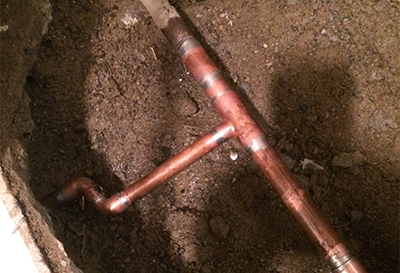Guide To Water Leakage Detection At Home
Guide To Water Leakage Detection At Home
Blog Article
We've stumbled on the article pertaining to Leaking water lines listed below on the net and figured it made perfect sense to talk about it with you over here.

Early detection of dripping water lines can minimize a prospective catastrophe. In addition to saving you money, it will lessen the irritation and irritation. The minute you find a leak, calling your plumber for repair services is the very best service. Nevertheless, some little water leaks may not be visible. If you can not discover it with your naked eyes, below are some hacks that aid.
1. Analyze the Water Meter
Every residence has a water meter. Inspecting it is a surefire way that helps you find leaks. For starters, turn off all the water resources. Guarantee no one will purge, use the tap, shower, run the cleaning maker or dishwashing machine. From there, most likely to the meter as well as watch if it will certainly transform. Since nobody is using it, there must be no movements. That indicates a fast-moving leakage if it moves. Furthermore, if you find no changes, wait a hr or two as well as inspect back once more. This means you might have a slow leak that could even be below ground.
2. Check Water Usage
If you detect sudden modifications, in spite of your usage being the very same, it means that you have leaks in your plumbing system. An unexpected spike in your expense indicates a fast-moving leakage.
A consistent rise every month, also with the very same routines, reveals you have a slow-moving leakage that's also gradually rising. Call a plumber to completely check your building, particularly if you feel a cozy location on your floor with piping below.
3. Do a Food Coloring Examination
When it comes to water intake, 30% comes from toilets. If the shade in some way infiltrates your dish during that time without flushing, there's a leakage between the storage tank and dish.
4. Asses Exterior Lines
Do not neglect to inspect your outdoor water lines too. Must water seep out of the link, you have a loosened rubber gasket. One small leakage can lose heaps of water and also spike your water expense.
5. Check as well as Examine the Circumstance
Property owners must make it a habit to inspect under the sink counters and also inside cabinets for any bad odor or mold development. These two red flags show a leakage so prompt focus is called for. Doing regular assessments, even bi-annually, can save you from a major problem.
Inspect for stainings and weakening as most devices as well as pipes have a life expectancy. If you believe leaking water lines in your plumbing system, do not wait for it to escalate.
Early discovery of dripping water lines can alleviate a prospective catastrophe. Some small water leaks might not be visible. Checking it is a proven way that aids you find leaks. One little leak can lose lots of water and also increase your water expense.
If you presume leaking water lines in your plumbing system, do not wait for it to rise.
WARNING SIGNS OF WATER LEAKAGE BEHIND THE WALL
PERSISTENT MUSTY ODORS
As water slowly drips from a leaky pipe inside the wall, flooring and sheetrock stay damp and develop an odor similar to wet cardboard. It generates a musty smell that can help you find hidden leaks.
MOLD IN UNUSUAL AREAS
Mold usually grows in wet areas like kitchens, baths and laundry rooms. If you spot the stuff on walls or baseboards in other rooms of the house, it’s a good indicator of undetected water leaks.
STAINS THAT GROW
When mold thrives around a leaky pipe, it sometimes takes hold on the inside surface of the affected wall. A growing stain on otherwise clean sheetrock is often your sign of a hidden plumbing problem.
PEELING OR BUBBLING WALLPAPER / PAINT
This clue is easy to miss in rooms that don’t get much use. When you see wallpaper separating along seams or paint bubbling or flaking off the wall, blame sheetrock that stays wet because of an undetected leak.
BUCKLED CEILINGS AND STAINED FLOORS
If ceilings or floors in bathrooms, kitchens or laundry areas develop structural problems, don’t rule out constant damp inside the walls. Wet sheetrock can affect adjacent framing, flooring and ceilings.
https://www.servicemasterbyzaba.com/blog/how-to-detect-water-leakage-in-walls/

Hopefully you liked our section on Detecting hidden plumbing leaks. Thank you so much for taking time to read our content. If you liked our page if you please be sure to pass it around. Thank you for your time invested reading it.
Report this page